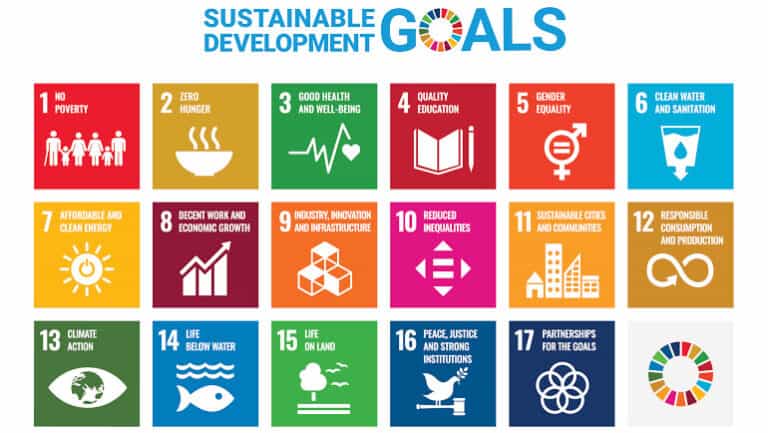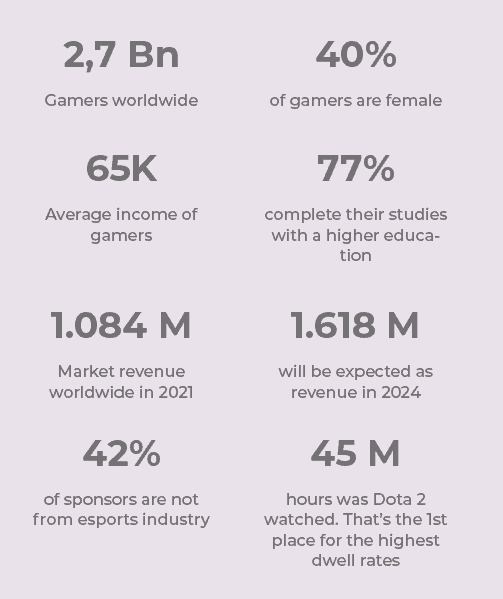Welcome to become-a-pro’s New Year forecast.
We talk about the trends of the upcoming sponsorship year.
These include:
- Growth in influencer marketing
- Sustainability
- eSports
- Digital Revolution
- Crypto currencies
- Fan Engagement
Feel free to download the booklet in English or alternatively you can read through the content from it here on the blog.
GROWTH IN INFLUENCER MARKETING
Influencer marketing has been the tool of choice for about five years now and the boom continues unabated. According to the Influencer Marketing Hub – In 2016, the industry was valued at US$1.7 billion and by the end of 2021 it was worth US$13.8 billion. 62 per cent of marketers recently announced their intention to increase their budget for influencer marketing. Influencer marketing thus offers a major new opportunity for sportspeople – especially those from the less well-funded minor sports – to become entrepreneurs.
Hence, it is not only the sporting performance that counts, but also the presentation in social media. All athletes are influencers, no matter what level they are competing at.
There are different categories, either celebrities or star influencers, whereby companies advertise with famous faces which are role models for their community. For most companies, this category is not an option, but more likely macro-influencers (reach from 100k followers to 1M followers). The Influencer replaces the brand as a sender with his signature. He stands for a strong content and reaches the brands with his special motivation. The brands, in turn, must give the influencer as much freedom as practically possible so that he or she can present the product more authentic. After all, it’s all about the right brand fit. The influencer’s profile must fit and be as congruent as possible with the band requirements as a base.
For micro-influencers (between 10k and 100k followers), it is not only content that is “king”, but above all creativity. Compared to influencers with more followers, they have a higher engagement rate than opinion leaders with more followers, which is an interesting marketing option for companies. Such influencers are often experts in a niche.
They are very credible with a local connection. No matter what kind of influencer: a good story around the brand is crucial. The main thing is that the story is human and arouses emotions. Whenever something is classically promotional, the follower or customers lose interest. It needs to be better prepared so that the interested parties build a bond. It is moving away from striking stories on Instagram, in which an influencer holds a product with an associated discount code in the camera and promotes it relatively dispassionately. Followers won’t be satified – they long for good storytelling. For the bottom line, it’s not just about the gross reach, i.e. the number of followers the influencer has, it is about the interactive part of the reach.
tive part of the reach. On Instagram, for example, this includes storyviews, i.e. the number of people who actually see a story or a post. On Tiktok or YouTube, the percentage of people who actually watch a video also counts, not just the individual views. Key figures such as sales, registrations or engagement are also decisive.
And what kind of payment should a company expect? Meanwhile, a benchmark for influencer prices, is difficult to measure. A common rule in the industry is around 100 euros per 10,000 followers. On Instagram, between three and ten euros are paid for a price per thousand contacts (CPM), on YouTube between 20 and 100 euros. With micro-influencers, on the other hand, soft values also count when it comes to price. Since community loyalty is high, sums in the three-digit range are paid for 800 storyviews. Nevertheless, companies should also consider engagement, reach and brand fit, as well as interaction and interaction for all kind of influencers with the community. If they do, accordingly, these values often differ.
SUSTAINABILITY
Sustainability and new attitudes are the megatrends of the next five years. Sustainability is increasingly becoming a basic requirement for economic activity. So everyone in society has a responsibility towards our environment.
This awareness can also be seen in the sports business. But impeccable sustainability role models are also to be viewed with scepticism in the sports business. Yet it is urgently necessary for sports organisations to develop a strategy of ecological, economic and social sustainability and to transfer it to their core business. There is only a fine line between best cases and greenwashing campaigns.
The connection between sustainable corporate goals and sponsoring is also not yet clear to everyone. However, what is clear, is this: The sustainability process is a marathon – but compared to other industries, sport is dynamic enough to change.
Companies and brands must find convincing answers to the demands of consumers, but also of their employees. This leads companies to fundamentally rethink aspects such as climate protection, diversity or employee rights. The rethinking of companies has an influence on professional sport.
If a company wants to be credible in its claim to act sustainably and responsibly, this must also be reflected in sponsoring. Federations, leagues and clubs have recognised this and are increasingly focusing on sustainability and social responsibility. Therefore, the demands of sponsors as well as the demands of consumers and investors are equal.
A good starting point for acting according to sustainable aspects are the Sustainable Development Goals, which translate sustainable development into a national strategy. All UN member states, such as Germany, have committed themselves to these goals.

(2030 Agenda for Sustainable Development A/RES/70/1, paragraph 37)
Sport is also an important enabler of sustainable development. We recognize the growing contribution of sport to the realization of development and peace in its promotion of tolerance and respect and the contributions it makes to the empowerment of women and of young people individuals and communities as well as to health, education and social inclusion objectives.
eSPORTS
In addition to continuous product innovations, companies are increasingly focusing on addressing their target groups. Many companies are active as sponsors in sports, art or music in order to cover the interests of their target groups, to enter a close contact with their customers and to become part of their lifestyle. But many of them have to realise that especially the millennials, i.e. the 16- to 36-year-olds, can often no longer be reached through the classic advertising channels. Instead, they expect personalised interactions on the communication channels that are important to them, such as TikTok, Instagram, WhatsApp or Snapchat. The use of e-sports as a marketing channel opens up an innovative digital path to reach this group of digital natives.
eSports is a relatively young industry, but it can already compete with established sports. For example, in the course of the Dota 2 tournament 2017, almost 25 M US Dollars in prize money was distributed to the participating teams. This significantly exceeded the prize money in various other sports, such as cycling (Tour de France 2017: 2.3 M Euros) or golf (The Open 2017: 9.2 M Euros).
Initially, only sponsors from the sector got involved, such as hardware and software manufacturers. Now, there are many more cooperations outside the sector, which are very important for this still young, growing industry like e-sports. Not only does more money flow into the e-sports market, the e-sports ecosystem also learns from the experience and professionalism of large companies.

DIGITAL REVOLUTION
Digital transformation has been growing for several years now. For the last 2-3 years, digital sponsorship has offered a range of opportunities. Physical and digital brand rights can be combined, creating a full fan experience. Through proper targeting and wide reach thanks to specific ads, it allows the content of sponsors and their athletes to be delivered to the appropriate target audience across a variety of channels.
In addition, two areas that become-a-pro also provides are growing: the evaluation of athlete data through algorithms and artificial intelligence, as well as a simplified completion of sponsorships, as the administrative effort is automated.
Analysis of data: Currently, Artificial Intelligence can analyse the data such as experiences, feedback, geo-data, interactions of users. Wearables (smartwatches, fitness trackers, etc.) simplify this process, as users carry them with them all the time and often also use them during training. This creates an accurate picture of the target group, which can be divided into clusters and provided with individual content.
become-a-pro already evaluates the athletes’ social media presence in order to present sponsors with the most suitable athlete to guarantee long-term sponsorship.
For this purpose, the athletes link their social media channels in their become-a-pro profile and an algorithm analyses the data and classifies it into a scoring system.
Simplified sponsorship closure: Closing a sponsorship requires a lot of administrative effort. First, the athletes have to be analysed, then, after a decision has been made, contracts have to be concluded, the general conditions have to be defined and the exchange has to be maintained, i.e. the sponsorship has to be monitored. If this process is not automated, it requires time and financial capacities. Thanks to digitalisation, it is also possible to automate these processes and completely relieve companies. Of course, there is always a part where human intuition is needed, but it makes things a lot easier for companies. become-a-pro offers a solution for this very purpose with its contractboard, as all sponsorships are displayed in an overview, contracts are managed and partner communication is made possible.
CRYPTO CURRENCIES
Another trend in the market are the emerging crypto companies that will innovate the industry with new shareholder, partner or sponsor roles. At the beginning of December, for example, crypto.com announced a mega deal. The crypto platform is taking over the name sponsorship for the Staples Center, where the Los Angeles Lakers play their home games in the NBA. They have invested around 700 million US dollars for this, according to a press statement.
Like all brands, these new companies ultimately want to achieve reach and build an image. In sports environments, spectators and audiences are often electrified, highly emotional and thus receptive to advertising messages. For those crypto companies, a positive image transfer is a clear goal. Cryptocurrencies still seem to be too technocratic to ordinary citizens. The companies want to achieve that crypto enjoys recognition and acceptance in the mainstream target group and they want to achieve this goal with the help of sport.
Physical borders are not the only geographical realities being challenged by modernity. The emergence of cryptocurrencies, metaverse blogs, blockchain, NFT and other financial and technology players has swept the sports industry at a speed that the industry itself was not necessarily prepared for.
In just a few years, sometimes even months, brand new companies made famous by the popularity of Bitcoin and other cryptocurrencies have set out to conquer the world of sports, striking multi-million dollar deals that have redefined the sport sponsoring world. This is comparable with new tobacco or new bank deals or maybe it is even more.
Digital financing is already the present, not the future, of sports marketing. The future is clearly in the Metaverse – the mega-network of connected networks that guarantees virtual worlds but absolutely real experiences and economies and is the next big thing in digital.
Big names like Meta, Amazon, Apple started preparing for the metaverse years ago, have already built the internet of tomorrow – and are speculating about how it will work on Decentralised Land, for example. The big sports companies promise not to be defeated and to offer their fans and stakeholders a new world of 3.0 opportunities to enjoy in the metaverse and to manage via blockchain and proprietary NFTs.
Compared to other sectors the the crypto industry can not compete. Not even half as much as in the automotive industry has been achieved by the technology. The increase in sponsorship contracts from the automotive industry is about 81 per cent, insurance companies come to 27 per cent.
However, it will be estimated that the hype surrounding cryptocurrencies will go on, in the next years. The experts estimate that investments in sports sponsorship will increase strongly in the future – by 2026, they expect an increase of around 778 percent compared to 2021.
This means that there is now a great opportunity for the industry to enter the crypto market even further. The challenge is to connect or even unite the digital world with sport.
Disclaimer: This information does not represent a positive or negative position on cryptocurrencies, nor a recommendation to invest. This content only addresses developments in sports sponsorship.
FAN ENGAGEMENT
What differentiates customers from fans? Some buy a product, others recommend it, love it, live it. Therefore, companies should act like sports clubs and turn their customers into fans.
It is not helpful to advertisers if fans only see company logos. It is more important that the audience really connects with the brand and the product. Through penetration and interaction with the brand, ideally a positively charged, long-term relationship is created that charges the brand image and leads to the consumer’s intention to buy. Due to globalisation, it is no longer enough to carry out a single action in the face of increasing competition. Brands must combine their messages transmedially across several channels. An interplay of TV advertising with digital extension, social media footprint and an active presence in the stadium is recommended to interact more with fans. The aim is to achieve cross-media communication which leads the fans to interactivity.
Successful fan engagement is sustainable. They will not only interact with your brand at the stadium (f.e.), but also afterwards through various channels. There is even the possibility of activating the World of Mouth, i.e. the fans tell other contacts about their positive experience with the brand and recommend it to others. If you understand that merchandising and ecommerce also generate revenue outside of the point of sale and align your communication and software tools accordingly, you will be much better able to build up long-lasting bonds with your potential customers.
That is why the community and the fans also need channels and tools with which they can communicate with the fans. We are aware of this need towards the fans and the community, which is why become-a-pro is constantly working on improving our tools and integrating new innovations. Fan engagement is one of our future process optimisations.
Sources:
- ESB Network
- ISPO
- SPONSORs
- United Nations
- PWC
- SportBusiness





